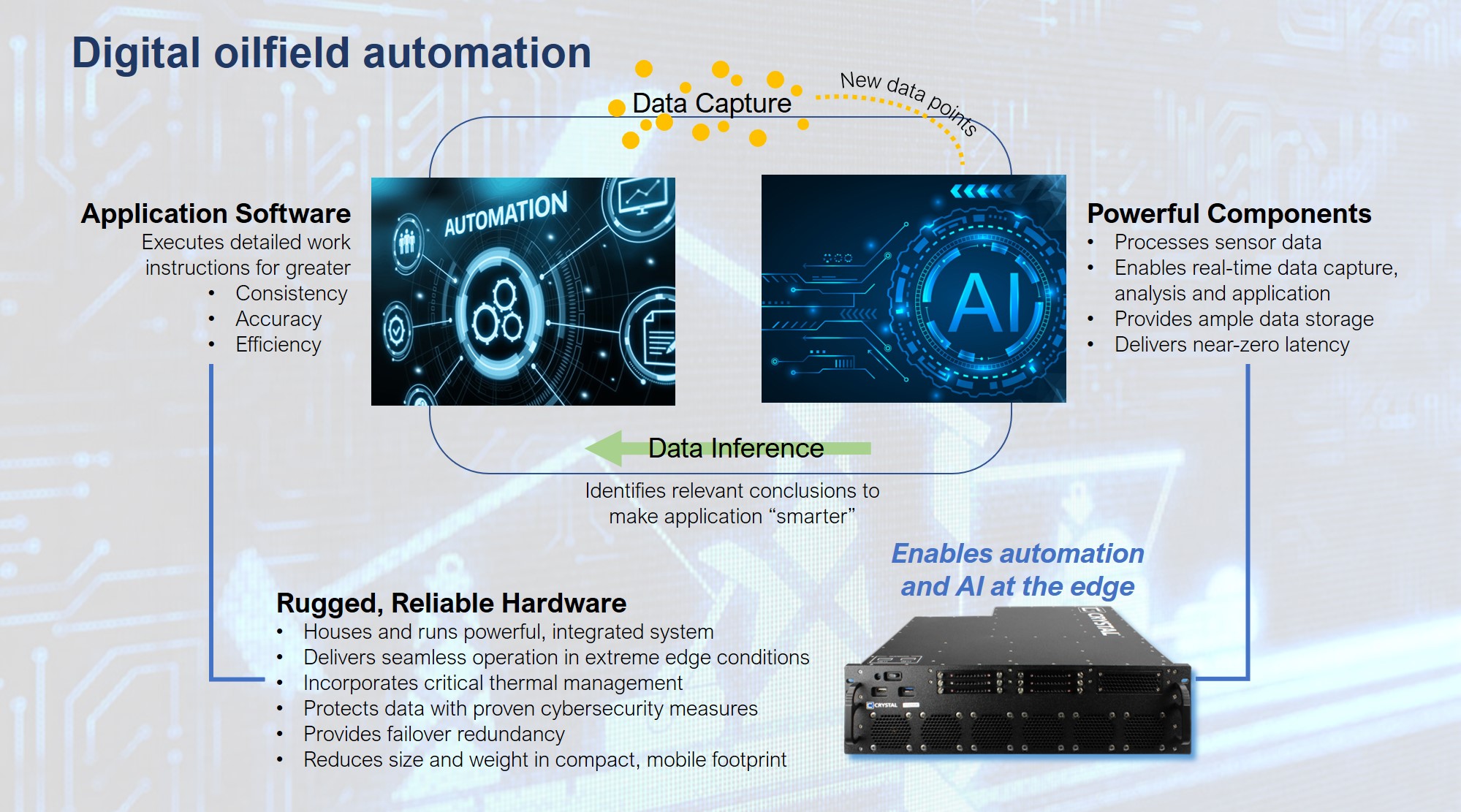After 20 years of industry hesitation and resistance, the staggering scope of challenges hindering the wide-spread adoption and implementation of digital oilfields has all but dissolved.
Technical capabilities
The once disparate and disconnected compute solutions required to make digital oilfield automation a reality have matured to smarter, more comprehensive and integrated systems. Along with the remarkable advancements in AI and ML, these systems can deliver significant value through asset tracking and data inference for ongoing automation refinement.
With the alignment of AI, cloud computing, powerful GPUs that capture and analyze massive amounts of real-time sensor data, and CPUs that can tackle ever-increasing workloads, data-center computing no longer has to be confined to a data center. Essential to taking these critical compute operations out of the data center and into the field—and a previously missing element—is having hardware that can handle the substantial demands of both the computing requirements and the operating environment.
Just like a tension leg platform provides a sturdy foundation for the safe, reliable operation of an offshore drilling rig, edge computing must also have a strong foundation. If the hardware isn’t designed and built specifically to withstand the unpredictable, demanding edge environments, even the best software and components become irrelevant. Rugged, high-performance compute hardware ensures backend control systems and monitoring software operate effectively and without disruption from well development to completion, despite potential disruptions from seismic activity, extreme rig vibration, dust, lightning, or salt fog corrosion.
The ability to identify and integrate the precise configuration of software, storage, processing power, networking, and cybersecurity needed to craft timely, seamless efficiency and keep up with the rapid evolution of technology cannot be done by a single source; it is a team sport. Strong collaboration with specialized partners is a must, because having the right software and hardware isn’t enough. The real sophistication is ensuring all the elements fit and work together properly in a compact, mobile footprint to execute the desired application with flawless precision.

Demonstrated performance
Pursuing revolutionary transformation is a balancing act of bold ingenuity and risk tolerance especially when significant investments, education and process revisions amid market volatility are involved. This made the “you go first” hesitation to crossover to digital oilfields due to lack of proven performance a fair concern. But other industries are demonstrating how their digital transformations are paying off.
By adopting these methods ahead of the curve, electrical utilities are reaping the benefits as they work to modernize the U.S. Smart Grid. With increasing demand, traditional control rooms designed for one-way communication were expand no longer sufficient. Now, substations equipped with independent computer systems are becoming industry standard.
Electrical utilities using Crystal Group’s virtualization-enabled substation servers are able to:
- Deliver consistent, uninterrupted power distribution
- Facilitate two-way communication flow from distributed energy sources
- Monitor and address system performance, including alarms and security threats, in real-time
- Push critical, on-demand updates to one or more sites from a centralized location
- Use trend data to define tailored operating modes for emergency situations without costly delays or disruptions, as well as
- Identify preventive maintenance opportunities to minimize costly repairs in the future
These software-agnostic, hyperconverged systems consolidate the work of multiple, discrete hardware solutions into a single edge compute solution to deliver seamless real-time automation, remote management, cybersecurity, auto failover, and zero-trust security.
Likewise, AI and autonomy have propelled impressive advancements in other industrial markets, like autonomous trucking, construction and mining. Advanced compute systems that incorporate high-performance automation and AI technology with rugged hardware built to optimize the thermal performance of the power-hungry GPUs needed for real-time sensor fusion and situational awareness are driving safe, accurate Level 3 and 4 operation on today’s roads.
It’s time
The advanced computer systems that were once aspirational for digital oilfields are now reality. By incorporating high-performance automation and AI technology with rugged hardware built specifically for the edge, oil & gas companies have ready access to the game-changing solutions that digital oilfields have long awaited.
Oil & gas companies, like BP, ExxonMobile, Halliburton, Schlumberger and Weatherford, are taking the lead in transitioning to digital oilfields. As with any disruptive change, there will be obstacles, but with the lucrative information, operational and financial improvements to be gained, now is the time to take the leap into the digital playing field.